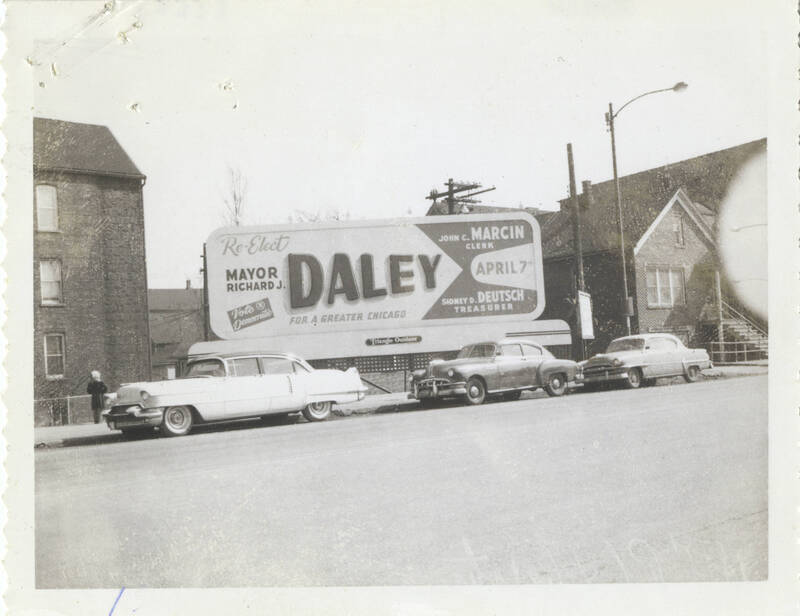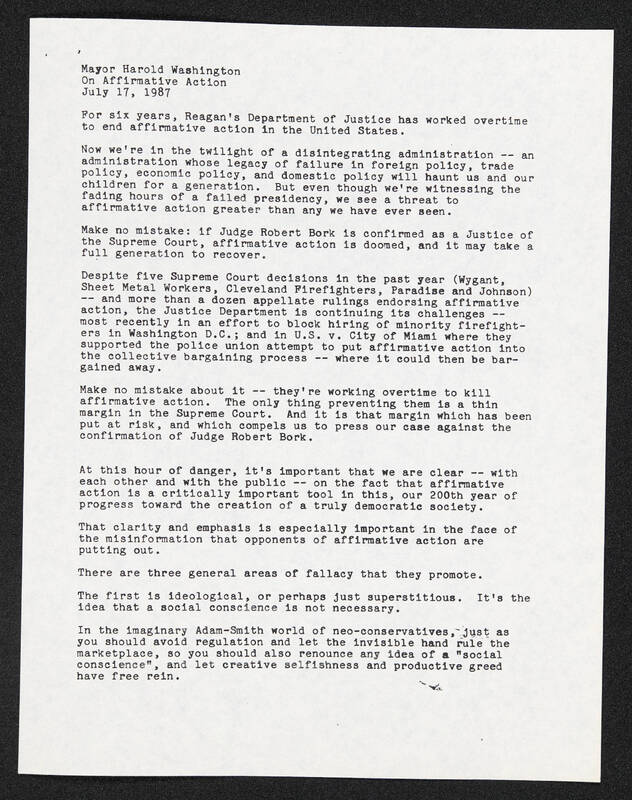Chicago Mayor Washington: Opposition and Support
The political landscape into which Washington arrived as mayor was largely defined by the work of Richard J. Daley, whose long career in politics included serving as mayor of Chicago from 1955 until his death in 1976. During these 21 years in office, Daley was responsible for many large development projects in the Chicago area: building expressways, airport renovations, and part of the University of Illinois at Chicago.
Throughout his time in office, his actions unfortunately did not serve all residents of the city equally. In addition to the previous commissions, he was also responsible for the construction of housing projects that essentially continued the city’s segregation after such practices were supposed to be abolished. As the demographics of Chicago began to change, in large part due to the Great Migration, racial tensions grew.
Daley’s power, which had once been seemingly steadfast, began to waver. However, he did not cater to the needs of a more diverse city; he repeatedly took the side of white citizens, rather than Black and other minorities, who were fighting for civil rights. This alignment can be seen clearly in Daley’s response to the city’s upheaval related to the 1968 Democratic National Convention and the assassination of Martin Luther King, Jr., when he told police officers to “shoot to kill” in the streets [2].
Harold Washington’s election was a much-needed change for many. The faith that Washington’s supporters put in him was evident even before his winning election—his presence as a representative was already inspiring to many groups, like those who encouraged him to run for mayor a second time. In the book Harold Washington: A Political Biography, Chuck Stone, (who had known Washington since college) writes about what he saw as bolstering forces for the election’s result. He cites police brutality in Chicago, the Reagan presidency, and the mayoralty of Jane Byrne (who failed to deliver her promised support to Chicago’s Black communities). When Harold Washington announced that he would be running for mayor again, Stone writes that Black voters “thundered out of their homes to be in the voting booths” [3]. In the general election, it is estimated that 97% of Black voters voted for Washington. Additionally, he garnered around 74% of the Latino vote. Only 12% of votes from white wards were for Washington.
[2] Roger Biles, “Daley’s Chicago,” in Encyclopedia of Chicago. (Chicago: Chicago History Museum and the Newberry Library, 2005), http://encyclopedia.chicagohistory.org/pages/1722.html.
[3] Florence Hamlish Levinsohn, Harold Washington : A Political Biography (Chicago, IL : Chicago Review Press, 1983), http://archive.org/details/haroldwashington0000levi_k8e8, 8.
This support is what carried Washington into office, where he became a beloved figure. However, his time as mayor was not all smooth sailing. His opponents would not allow it to be forgotten that Washington had previously had some legal trouble, relating to his failure to pay tax returns and wrongfully charging clients. For these instances, he paid back what was owed, was fined, spent 37 days in jail, and also had his license to practice law temporarily suspended. This was all during the 1970s, when many other politicians were being pardoned for doing much more. Despite his opponents’ efforts to try and discredit him, Washington’s credentials, his poise during the debates, and his ability to follow through on his promises won the support of his constituents, who were not disappointed by his time in office.



